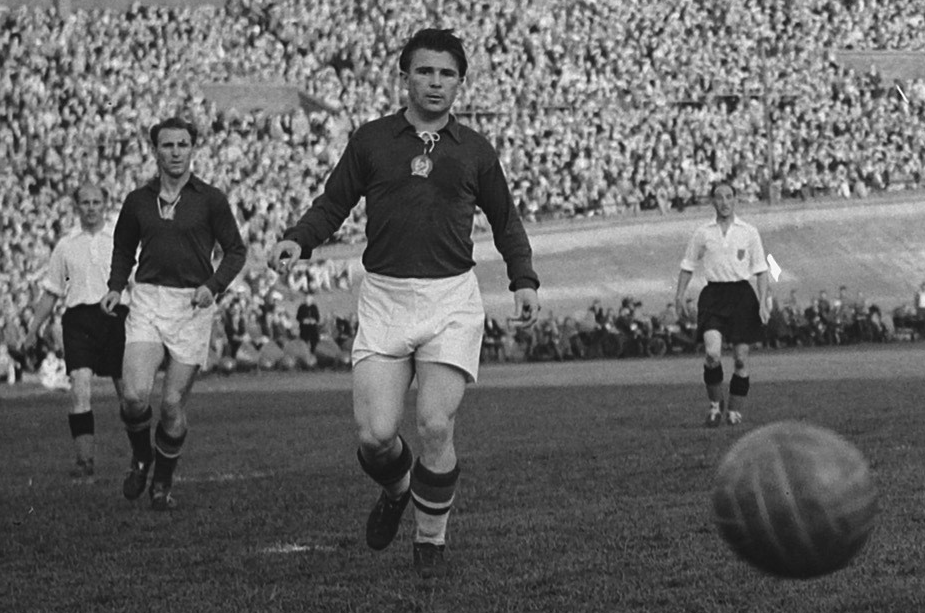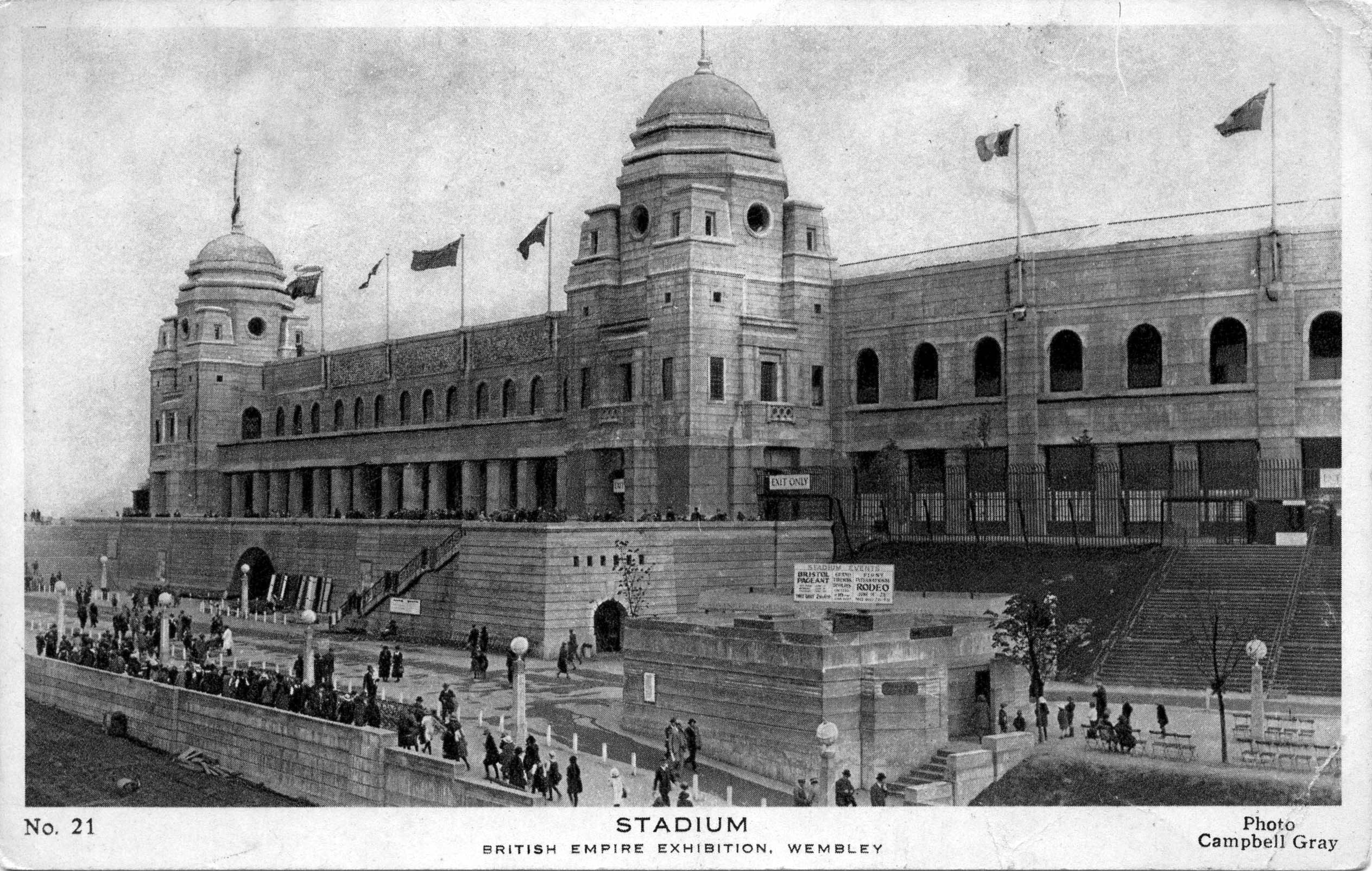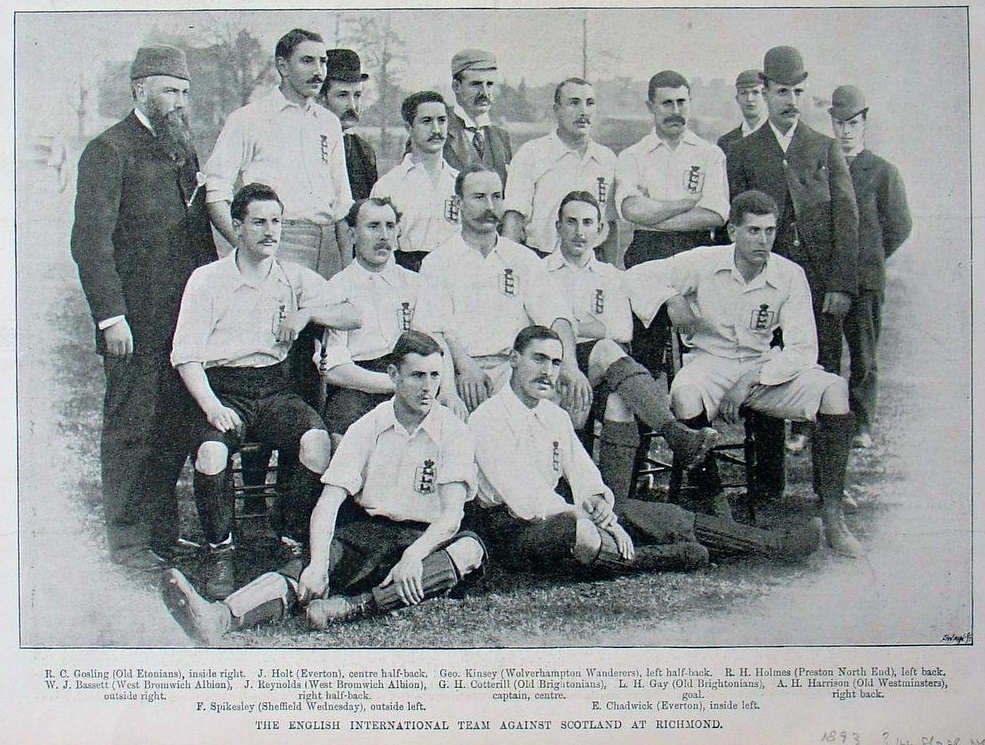|
Nándor Hidegkuti
Nándor Hidegkuti (3 March 1922 – 14 February 2002) was a Hungarian football player and manager. He played as a forward or attacking midfielder and spent the majority of his playing career at MTK Hungária FC. During the 1950s he was also a key member of the Hungarian National Team team known as the Golden Team. Other members of the team included Ferenc Puskás, Zoltán Czibor, Sándor Kocsis and József Bozsik. In 1953, playing as a '' deep lying centre-forward'', a position which has retroactively been compared to the modern ''false 9'' role, he scored a hat-trick for Hungary when they beat England 6–3 at Wembley Stadium. Playing from deep, Hidegkuti was able to distribute the ball to the other attackers and cause considerable confusion to defences. This was an innovation at the time and revolutionised the way the game was played. Hidegkuti died on 14 February 2002 after suffering from heart and lung problems for some time before his death. MTK Hungária FC renamed the ... [...More Info...] [...Related Items...] OR: [Wikipedia] [Google] [Baidu] |
Budapest
Budapest (, ; ) is the capital and most populous city of Hungary. It is the ninth-largest city in the European Union by population within city limits and the second-largest city on the Danube river; the city has an estimated population of 1,752,286 over a land area of about . Budapest, which is both a city and county, forms the centre of the Budapest metropolitan area, which has an area of and a population of 3,303,786; it is a primate city, constituting 33% of the population of Hungary. The history of Budapest began when an early Celtic settlement transformed into the Roman town of Aquincum, the capital of Lower Pannonia. The Hungarians arrived in the territory in the late 9th century, but the area was pillaged by the Mongols in 1241–42. Re-established Buda became one of the centres of Renaissance humanist culture by the 15th century. The Battle of Mohács, in 1526, was followed by nearly 150 years of Ottoman rule. After the reconquest of Buda in 1686, the ... [...More Info...] [...Related Items...] OR: [Wikipedia] [Google] [Baidu] |
1954 FIFA World Cup
The 1954 FIFA World Cup was the fifth edition of the FIFA World Cup, the quadrennial international football tournament for senior men's national teams of the nations affiliated to FIFA. It was held in Switzerland from 16 June to 4 July. Switzerland was selected as the host country in July 1946. At the tournament several all-time records for goal-scoring were set, including the highest average number of goals scored per game. The tournament was won by West Germany, who defeated tournament favourites Hungary 3–2 in the final, their first World Cup title. Host selection Switzerland was awarded the tournament unopposed at a meeting in Luxembourg City on 22 July 1946, the same day Brazil was selected to host the 1950 World Cup. Qualification The hosts (Switzerland) and the defending champions (Uruguay) qualified automatically. Of the remaining 14 places, 11 were allocated to Europe (including Egypt, Turkey, and Israel), two to the Americas, and one to Asia. Scotland, Turkey, and S ... [...More Info...] [...Related Items...] OR: [Wikipedia] [Google] [Baidu] |
Péter Palotás
Péter Palotás (27 June 1929 – 17 May 1967), born as Péter Poteleczky, was a Hungarian footballer who played as a forward for MTK Budapest FC and Hungary. During the 1950s he was a fringe member of the team known as the ''Mighty Magyars'' and played alongside the likes of Ferenc Puskás, Zoltán Czibor, Sándor Kocsis, Nándor Hidegkuti and József Bozsik. Palotás was an early pioneer of the deep-lying centre-forward role and in 1955 he scored the first ever hat-trick in a European Cup game. In 1959 he retired as a player due to a heart condition. The same condition led to his death on 17 May 1967. Club career Palotás spent all his playing career at MTK Budapest FC. However, during this time, the club changed their name several times. In 1949, when Hungary became a communist state, MTK were taken over by the secret police, the ÁVH and subsequently the club became known as Textiles SE. They then became Bástya SE, then Vörös Lobogó SE and then finally back to MT ... [...More Info...] [...Related Items...] OR: [Wikipedia] [Google] [Baidu] |
State Protection Authority
The State Protection Authority ( hu, Államvédelmi Hatóság, ÁVH) was the secret police of the People's Republic of Hungary from 1945 to 1956. The ÁVH was conceived as an external appendage of the Soviet Union's KGB in Hungary responsible for supporting the ruling Hungarian Working People's Party and persecuting political criminals. The ÁVH gained a reputation for brutality during a series of purges but was gradually reined under the government of Imre Nagy, a moderate reformer, after he was appointed Prime Minister of Hungary in 1953. The ÁVH was dissolved by Nagy's revolutionary government during the Hungarian Revolution of 1956 and succeeded by the Ministry of Internal Affairs III. Archived data related to the ÁVH and the Ministry of Internal Affairs III are made available through the . History This is a summary of the organisations acting as political police between 1945 and 1956. * 1945: Budapest Department of State Political Police, (''Budapesti Főkapitányság ... [...More Info...] [...Related Items...] OR: [Wikipedia] [Google] [Baidu] |
Hungarian People's Republic
The Hungarian People's Republic ( hu, Magyar Népköztársaság) was a one-party socialist state from 20 August 1949 to 23 October 1989. It was governed by the Hungarian Socialist Workers' Party, which was under the influence of the Soviet Union.Rao, B. V. (2006), ''History of Modern Europe A.D. 1789–2002'', Sterling Publishers Pvt. Ltd. Pursuant to the 1944 Moscow Conference, Winston Churchill and Joseph Stalin had agreed that after the war Hungary was to be included in the Soviet sphere of influence. The HPR remained in existence until 1989, when opposition forces brought the end of communism in Hungary. The state considered itself the heir to the Republic of Councils in Hungary, which was formed in 1919 as the first communist state created after the Russian Soviet Federative Socialist Republic (Russian SFSR). It was designated a " people's democratic republic" by the Soviet Union in the 1940s. Geographically, it bordered Romania and the Soviet Union (via the Ukrainian S ... [...More Info...] [...Related Items...] OR: [Wikipedia] [Google] [Baidu] |
Wembley Stadium (1923)
The original Wembley Stadium (; originally known as the Empire Stadium) was a stadium in Wembley, London, best known for hosting important football matches. It stood on the same site now occupied by its successor. Wembley hosted the FA Cup final annually, the first in 1923, which was the stadium's inaugural event, the League Cup final annually, five European Cup finals, the 1966 World Cup Final, and the final of Euro 1996. Brazilian footballer Pelé once said of the stadium: "Wembley is the cathedral of football. It is the capital of football and it is the heart of football", in recognition of its status as the world's best-known football stadium. The stadium also hosted many other sports events, including the 1948 Summer Olympics, rugby league's Challenge Cup final, and the 1992 and 1995 Rugby League World Cup Finals. It was also the venue for numerous music events, including the 1985 Live Aid charity concert. In what was the first major WWF (now WWE) pay-per-view ... [...More Info...] [...Related Items...] OR: [Wikipedia] [Google] [Baidu] |
England V Hungary (1953)
On 25 November 1953, Hungary—then the world's number one ranked team, the Olympic champions and on a run of 24 unbeaten games, and England, hailing from the birthplace of football, played a game which became known as the Match of the Century. Hungary won 6–3 and the result led to a review of the training and tactics used by the England team, and adoption of continental practices at international and club level in the English game. Background The English national team had suffered just one defeat on home soil against foreign opposition, which had been in 1949 against the Republic of Ireland. This had created a climate of complacency; the English Football Association (FA) simply assumed that as the originators of the game, English players were technically and physically superior to their foreign counterparts. In addition, coaching and tactical advances from abroad were ignored, with the English national side and the majority of clubs persisting with the outdated WM format ... [...More Info...] [...Related Items...] OR: [Wikipedia] [Google] [Baidu] |
England National Football Team
The England national football team has represented England in international Association football, football since the first international match in 1872. It is controlled by The Football Association (FA), the governing body for football in England, which is affiliated with UEFA and comes under the global jurisdiction of world football's governing body FIFA. England competes in the three major international tournaments contested by European nations: the FIFA World Cup, the UEFA European Championship, and the UEFA Nations League. England is the joint oldest national team in football having played in the world's 1872 Scotland v England football match, first international football match in 1872, against Scotland national football team, Scotland. England's home ground is Wembley Stadium, London, and its training headquarters is St George's Park National Football Centre, St George's Park, Burton upon Trent. The team's manager is Gareth Southgate. England won the 1966 FIFA World Cup F ... [...More Info...] [...Related Items...] OR: [Wikipedia] [Google] [Baidu] |
Hat-trick
A hat-trick or hat trick is the achievement of a generally positive feat three times in a match, or another achievement based on the number three. Origin The term first appeared in 1858 in cricket, to describe H. H. Stephenson taking three wickets with three consecutive deliveries. Fans held a collection for Stephenson, and presented him with a hat bought with the proceeds. The term was used in print for the first time in 1865 in the ''Chelmsford Chronicle''. The term was eventually adopted by many other sports including hockey, association football, Formula 1 racing, rugby, and water polo. Use Association football A hat-trick occurs in association football when a player scores three goals (not necessarily consecutive) in a single game; whereas scoring two goals (in a single match) is called a brace. In common with other official record-keeping rules, all goals scored during the regulation 90 minutes, plus extra time if required, are counted but goals in a penalty shooto ... [...More Info...] [...Related Items...] OR: [Wikipedia] [Google] [Baidu] |
József Bozsik
József Bozsik (; 28 November 1925 – 31 May 1978) was a Hungarian footballer who played as a central midfielder. He spent his entire club career at his hometown club, Budapest Honvéd. Bozsik was a key member of the legendary Golden Team as he represented Hungary in various international tournaments. Honvéd named their stadium, Bozsik József Stadion, after him. Early life József Bozsik was born in Kispest, now a district of Budapest. Given the nickname "Cucu" by his grandmother, he grew up playing football on the local football grounds in Kispest with his best friend and neighbour Ferenc Puskás. Playing career As an 11-year-old, Bozsik attracted the attention of Budapest Hónved and the club signed him to the youth team. In 1943, he made his debut for the first team against Vasas SC. He made his debut for Hungary at the age of 21 against Bulgaria on 17 August 1947 and went on to win 101 caps and score 11 goals between then and his final cap on 18 April 1962 against Urug ... [...More Info...] [...Related Items...] OR: [Wikipedia] [Google] [Baidu] |
Sándor Kocsis
Sándor Péter Kocsis (; ; 21 September 1929 – 22 July 1979) was a Hungarian footballer who played for Ferencváros TC, Budapest Honvéd, Young Fellows Zürich, FC Barcelona and Hungary as a striker. During the 1950s, along with Ferenc Puskás, Zoltán Czibor, József Bozsik and Nándor Hidegkuti, he was a member of the ''Mighty Magyars''. After the 1956 Hungarian Revolution, he moved to Spain where he became a member of the FC Barcelona team of the late 1950s. Kocsis was a prolific goalscorer for both Budapest Honvéd and Hungary. While playing for Honvéd, he was the top goalscorer in any European league in both 1952 and 1954. He also scored 75 goals in 68 appearances for Hungary – a 1.10 goal/game average at the game's highest level. Kocsis was the top goalscorer in the 1954 World Cup with 11 goals, a record at the time for goals in a single World Cup. He was also the first player to score two hat-tricks in a World Cup. His 2.2 goal/game average in the World Cup fin ... [...More Info...] [...Related Items...] OR: [Wikipedia] [Google] [Baidu] |






.jpg)

.jpg)